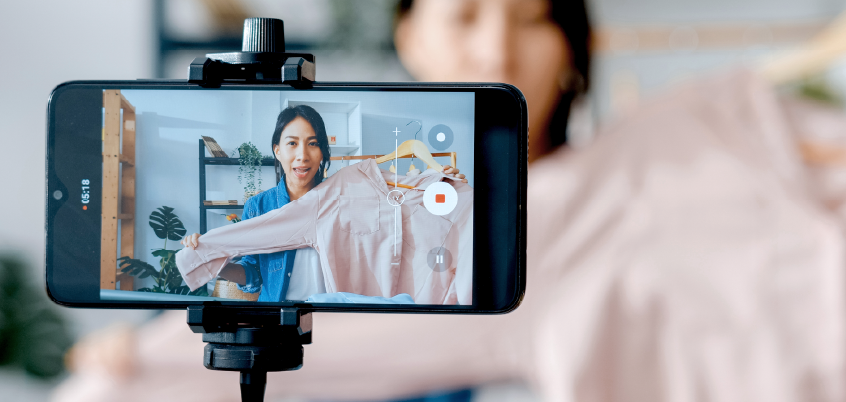Improved Connectivity Transforming the Shopping Experience for Retailers and Customers Alike

Introduction
Customers today expect retailers to provide the best shopping experience possible. They want seamless functionality across in-store, web, and mobile engagements. Additionally, they demand an always-on approach where they can search for, evaluate, and buy the newest in-demand products at any time from any location. And they have come to expect a very personalized encounter complete with customized recommendations and offers based their shopping history, likes, and dislikes.
To accommodate these changing needs and provide an engaging and satisfying shopping experience, retailers must make use of leading-edge technologies to better serve their customers and react to changing market conditions. The mix of technologies often includes analytics-driven web sites and mobile apps with personalized content and offers, targeted marketing and loyalty programs, and use of kiosks, free customer WiFi, digital signage, and mobile payment stations in stores.
Unfortunately, the use of these newer technologies can strain retailers’ legacy infrastructures. What is needed to bring the customer experience to a new level is enhanced connectivity delivered through a secure, high-performance, scalable network. Any solution must offer the flexibility to meet variable demands (e.g., seasonal changes or spikes due to marketing campaigns or social media) and must be able to scale to support new retail technologies as they emerge.
Such an infrastructure can improve employee productivity, streamline operations, speed order fulfillment, and provide cross-channel functionality. This, in turn, will help drive customer satisfaction and increase repeat business.
Key retail trends impacting communications and IT infrastructures
Retailers are using a variety of new technologies for internal activities and interactions with customers. Many of the technologies have a significant impact on retail networking infrastructures. Some of the major new technologies being used today include:
More sophisticated analytics such as predictive analytics for customized marketing and better forecasting: Big Data and analytics offer retailers a means to understand shoppers via a myriad of digital touch points from their online purchases to their presence on social networks. Savvy retailers combine data from web browsing patterns, social media, purchase history, industry forecasts, existing customer records, and mobile apps to predict trends, prepare for demand, optimize pricing, and engage shoppers with real-time, targeted offers. Using Big Data to mine actionable customer insight is a competitive advantage for the modern retailer. However, Big Data initiatives demand storage and network bandwidth to share and process the data.
Tighter integration of eCommerce, in-store, and mobile shopping experiences: Customers want and expect an experience that feels consistent and relevant regardless of where or how they are engaging a retailer. From a retailer’s perspective, this is both a challenge and an opportunity. With so many channels (e.g., web, email, social, and in-store) at customers’ fingertips, many retailers struggle to offer a seamless, integrated omni-channel experience. The challenge is how to get a single view of each customer that reflects the different ways they shop and interact with the retailer. In many organizations, old technology and siloed approaches to data collection and marketing are hindering success. In fact, in many organizations, old technology is considered to be the biggest barrier to delivering on digital initiatives, such as personalized customer experiences that resonate across channels.
Greater use of real-time information to better manage inventory, dynamically adjust pricing, and support customized marketing activities: Real-time analytics have the potential to transform operational systems by providing instant feedback that dramatically enhances how these systems respond to fast-changing events. For example, leading eCommerce sites have leveraged this technology by continuously examining all customers’ activities to identify special offers that are appropriate for the customer based on a combination of his or her preferences, shopping history, and current browsing behavior. In addition, common patterns across customers can be identified and used to steer strategic decisions influenced by buying trends. This technology is now making its way into brick and mortar stores to help personalize the shopping experience. Some retailers send real-time information from point of sale (POS) systems to back-office servers for analysis in order to provide immediate feedback to sales staff. This enables the retailer to dramatically enhance the shopping experience.
Improving the in-store customer experience using mobile apps, interactive displays, kiosks, beacons, and support for more payment options like mobile POS and mobile phone payments: Retailers are using in-store connectivity to greatly enhance the customer experience. In fact, a recent study found that in-store WiFi had the most significant positive impact on retail sales and customer loyalty of any technology initiative. The deployment of WiFi to store associates for use with mobile devices boosts loyalty and sales. Untethered sales associates can be more productive and helpful to shoppers because they can provide information (e.g., about product availability) and ring up a sale at the customer’s side. Additionally, many customers want WiFi access to comparison shop and research items while moving through the aisles. While some retailers have been hesitant to offer free WiFi due to showrooming (where the customer looks for a product at a lower cost from a competitor), smart retailers are leveraging the customer connection to deliver information, promote items, and offer on-the-spot savings.
Growth in mobile eCommerce activities: Retailers are increasingly leveraging consumers’ mobile devices as a means by which to deliver location-based marketing and promotional offers. Whether using GPS information from the device as a customer passes by a store or precise in-store location as derived by beacons or other location technology, retailers can be more proactive and push out offers based on user preferences.
Emerging tech to consider: Accommodating these varied technologies is challenging enough, but retailers need to keep an eye on some emerging trends that will soon have an impact on the industry. These trends include:
- Bluetooth beacons and other in-store technologies to provide precise customer location information, which can then be used for targeted marketing, allocating floor space, and other purposes
- Immersive shopping experiences and augmented reality
- Anonymous analytical face detectors coupled with interactive displays
- Internet of Things (IoT), RFID tags, and sensor-oriented devices enabling a more detailed and targeted customer experience and service.
What’s needed?
These technologies will enable improved customer experiences, and can result in higher loyalty and greater insight into and control over products in the supply chain. However, to support these various technologies, retailers need networking and IT infrastructures with certain characteristics.
Essential features include a network that delivers the performance, bandwidth, availability, and security to meet the demands of today’s retail back-office, marketing, and eCommerce activities, as well as the ability to enable a highly interactive in-store experience.
In particular, retailers need high-performance, business-class links between stores and headquarters, as well as among the stores themselves. There is also a need for in-store connectivity and networking to support various employee and customer activities. Finally, there must be robust Internet services to help support eCommerce activities and provide a means to share information and leverage the cloud.
Customers today expect retailers to provide the best shopping experience possible.
Locked Content
Click on the button below to get access
Unlock NowOr sign in to access all content on Comcast Business Community
Resource Center
Learn how Comcast Business can help
keep you ready for what's next.











